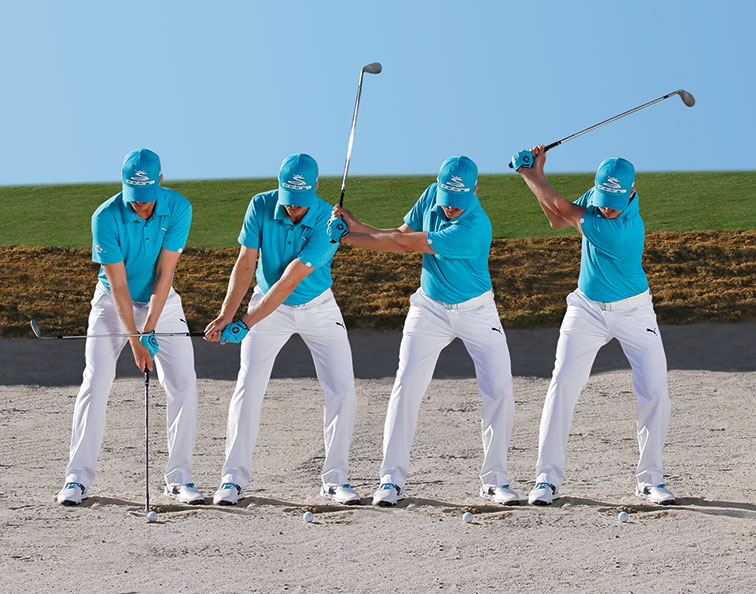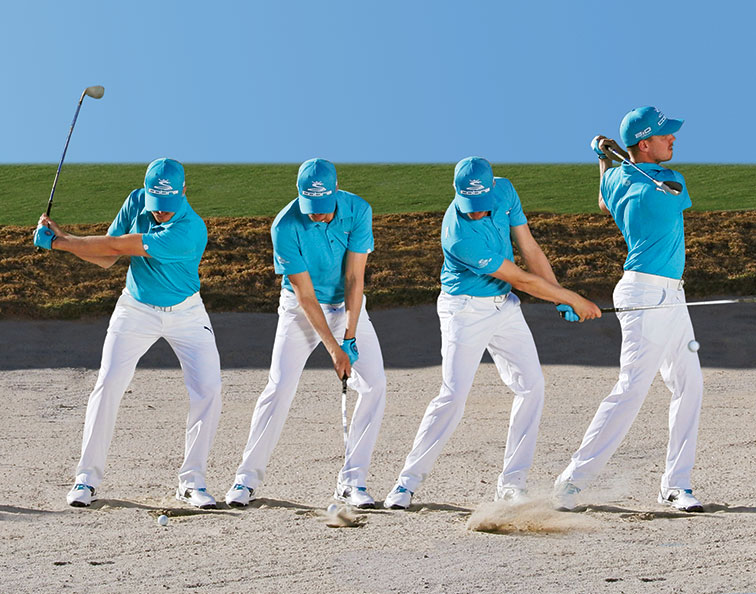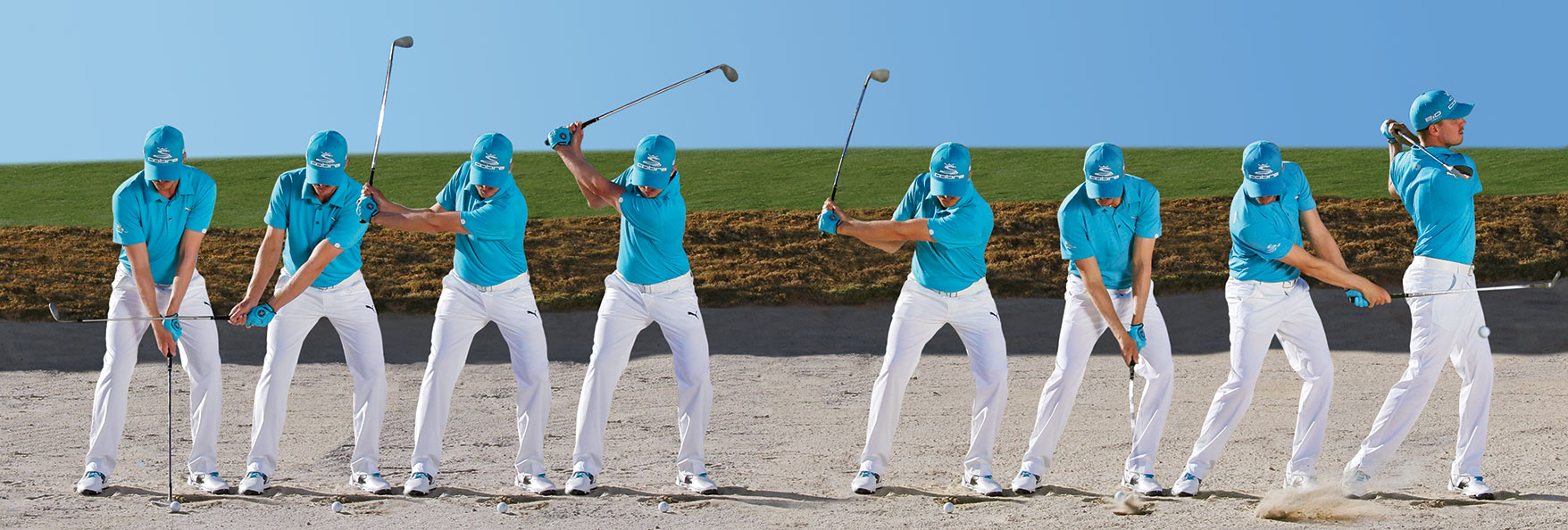They make it look so easy. That’s probably what you think when you see a tour pro hit a greenside bunker shot. The swing is simple and effortless, and the ball reacts like it’s on remote control. “They make it look easy because it is easy – to them,” says renowned teacher Jorge Parada, who works with Jonas Blixt [below] on the US PGA Tour and Beatriz Recari on the LPGA Tour. “They’ve done it thousands of times, so they hardly give the swing a thought. They’re focussing on where to land it and with how much spin.” That’s how good you get when you have been hitting these shots every day.
If that gives you pause about the likelihood you’ll ever be a good bunker player, don’t worry. You don’t have to hit 10,000 bunker shots to improve. Why? We have got you a cheat sheet. Below is a high-speed sequence of Blixt hitting a standard greenside bunker shot. Parada breaks it down frame by frame and shows us what makes the tour pros so good. As you’ll see, it’s a lot about stability and swing speed.
First thing to remember? This is the only shot where you’re trying to actually miss the ball. See more keys below. — Ron Kaspriske

- Good Foundation
Opening the face before you take your grip helps the club skim through the sand, teacher Jorge Parada says. So does keeping the shaft neutral and not leaning it forward. “Jonas does both just by cupping his left wrist at address,” Parada says.
- Rotate and Hinge
With the lower body staying still (notice Blixt keeps his left knee stacked over his left ankle) the upper body simply turns back. “A lot of amateurs sway off the ball,” Parada says, “which forces them to take too much sand or risk skulling the ball over the green.”
- Get To 90 Degrees
Most pros hinge the club into a 90-degree angle with the lead arm. “That narrows the swing’s arc, so they can quickly release that angle coming down,” Parada says. That snap release adds loft and backspin.

- Staying Stacked
Check out Blixt’s belt buckle here: It’s right over the ball. “He’s in position to put the low point of the swing under the ball,” Parada says. “That’s how pros control these shots so well: They consistently enter the sand about two inches behind the ball and slide the club under it.”
- Soft Wrists
There’s not much tension in the hands of a good bunker player, Parada says, and you can see that in how quickly Blixt’s wrists have unhinged. That lets the club go shallow and fast through the sand so the ball pops out and stops fast.
- No Help Needed
Another common trait among the pros is, they maintain their posture long after the ball is gone. “You’ll never see a tour player try to help the ball out by lurching his body upward,” Parada says. “They trust that the club will do what it’s designed to do.”
- Keeping The Faith
Many amateurs do a good job of setting up and hitting the sand behind the ball. What they don’t do is finish the swing, Parada says. “Pros aren’t afraid they’re going to hit the ball too far, so they swing through. They know, the longer the finish, the more they’ll spin it.”





